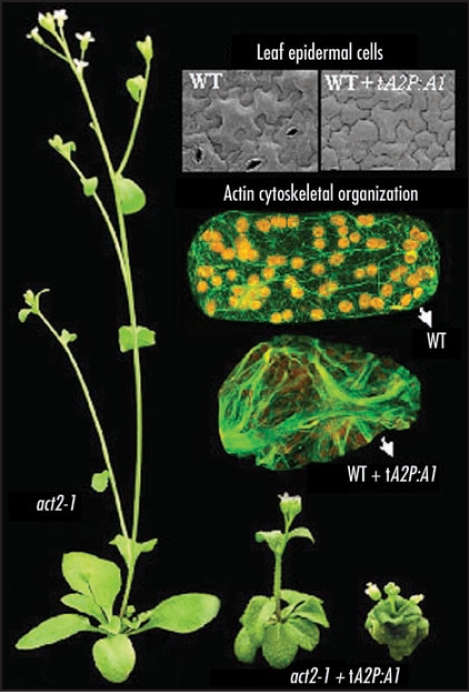Figure 1.
The effect of ectopic expression of reproductive ACT1 on plant morphology, cell size, and filamentous-actin organization. The act2-1 null mutant plants expressing ACT1 in vegetative tissues under control of actin ACT2 regulatory sequences (tA2P::A1) are extremely dwarf in stature (right two plants) as compared to an untransformed plant (left). The act2-1 null mutant has essentially a wild-type (WT) plant phenotype. Scanning electron micrographs reveal that the dwarf ACT1 expressing plants have smaller leaf epidermal cells. Immunolabeling of leaf cells of the dwarf plants with anti-actin antibodies reveal massive polymerization of actin into sheet-like structures (lower cell) as compared to the longitudinal arrays of fine filaments and bundles in WILD-TYPE. F-actin immunolabeling is shown in green and chloroplast autofluorescence in orange.

